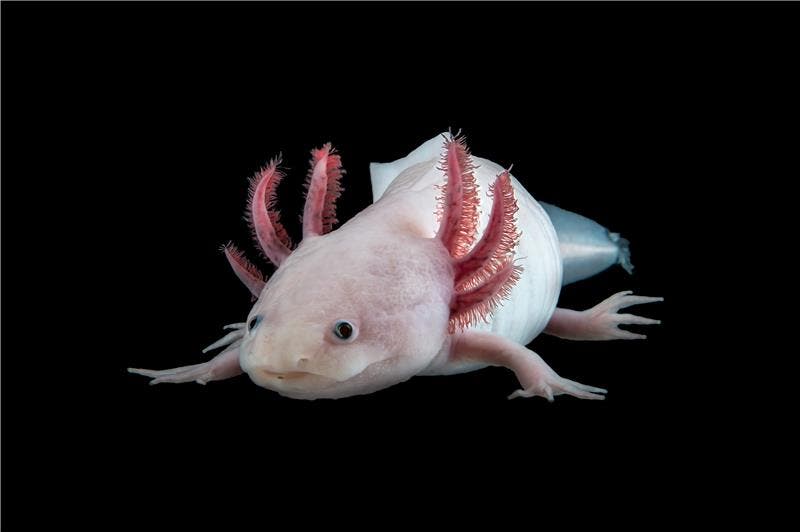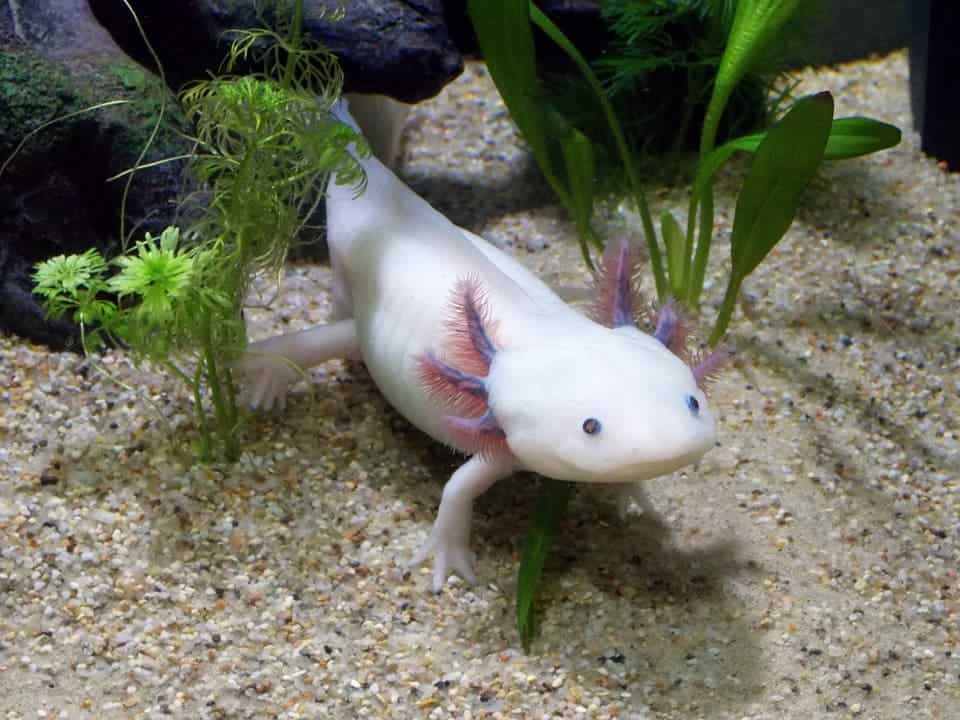
The axolotl (Ambystoma mexicanum), also known as the Mexican salamander, is one of the most peculiar animals on Earth. Its superpower is similar to that of Wolverine’s: extreme regeneration. Axolotl, this smily-faced amphibian, can regrow missing limbs, spinal chord segments, brain tissue, nerves, and retina.
Scientists have long been fascinated about this creature’s mysterious abilities. Now, a team composed of researchers from Vienna, Dresden, and Heidelberg has successfully decoded the entire genetic information of the axolotl. This data may help decipher the miracle of limb re-growth.
For quite some time, salamanders such as axolotl have been intensely studied because of their remarkable regeneration ability. If the amphibian loses a limb, in a few weeks, it will grow a new one, from scratch. The limb will be just like the old one, with no scar tissue whatsoever. These salamanders can also receive implants from their kin with no problems. A research team even performed axolotl head transplants in 1968. One of the animals lived up to 65 weeks with two functioning heads.
A key factor in understanding this type of regeneration is the animal’s genome (genetic material). So far, scientists couldn’t sequence all of it due to its length — at 32 billion base pairs, it is more than ten times larger than the human genome.
Researchers used the PacBio-platform, a sequencing technology that produces long reads to span large repetitive regions. A total of 72.435.954 reads were sequenced. Next, Gene Myers and Siegfried Schloissnig together with colleagues developed software systems that can assemble the genome from the 72 million pieces.
This is how they found that the uniqueness of the axolotl resides in its genes — the salamander only shares several genes expressed in regenerating limb tissue with other amphibian species. An essential developmental gene that plays key roles in neural and muscle development — PAX3 — is completely missing. Another gene, named PAX7, has taken over its functions.
“We now have the map in our hands to investigate how complicated structures such as legs can be re-grown”, says Sergej Nowoshilow, co-first author of the study. “This is a turning point for the community of scientists working with axolotl, a real milestone in a research adventure that started more than 150 years ago.”
Because of their incredible regenerative abilities, axolotls are of great interest to scientists. Because they can not only regenerate limbs and organs, but also brain tissue, many researchers hope that they might one day be able to do the same for human tissue in certain conditions. The implications in medical practice would be immensenly beneficial. One challenging aspect has always been the axolotl’s huge genome size but now that it’s been sequenced, a whole new avenue of discoveries await.
Scientific reference: The axolotl genome and the evolution of key tissue formation regulators. Sergej Nowoshilow, Siegfried Schloissnig, Ji-Feng Fei, Andreas Dahl, Andy W.C. Pang, Martin Pippel, Sylke Winkler, Alex R. Hastie, George Young, Juliana G. Roscito, Francisco Falcon, Dunja Knapp, Sean Powell, Alfredo Cruz, Han Cao, Bianca Habermann, Michael Hiller, Elly M. Tanaka, and Eugene Myers. Nature, doi: 10.1038/nature25458.







